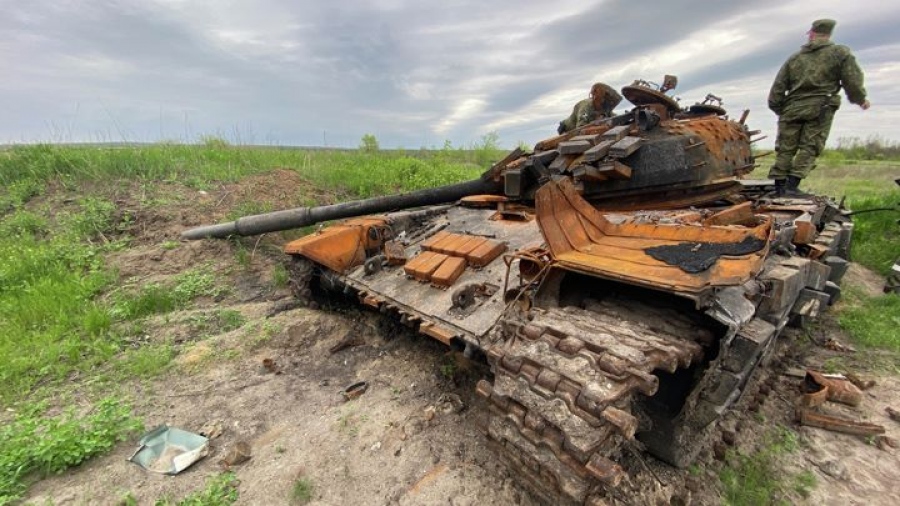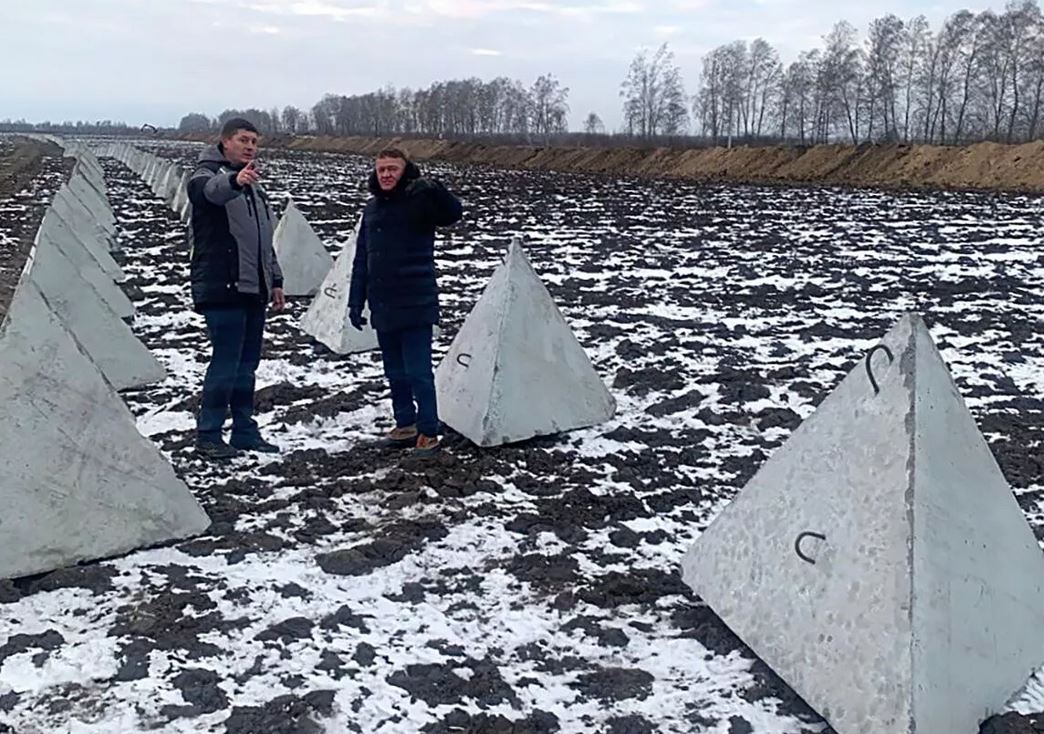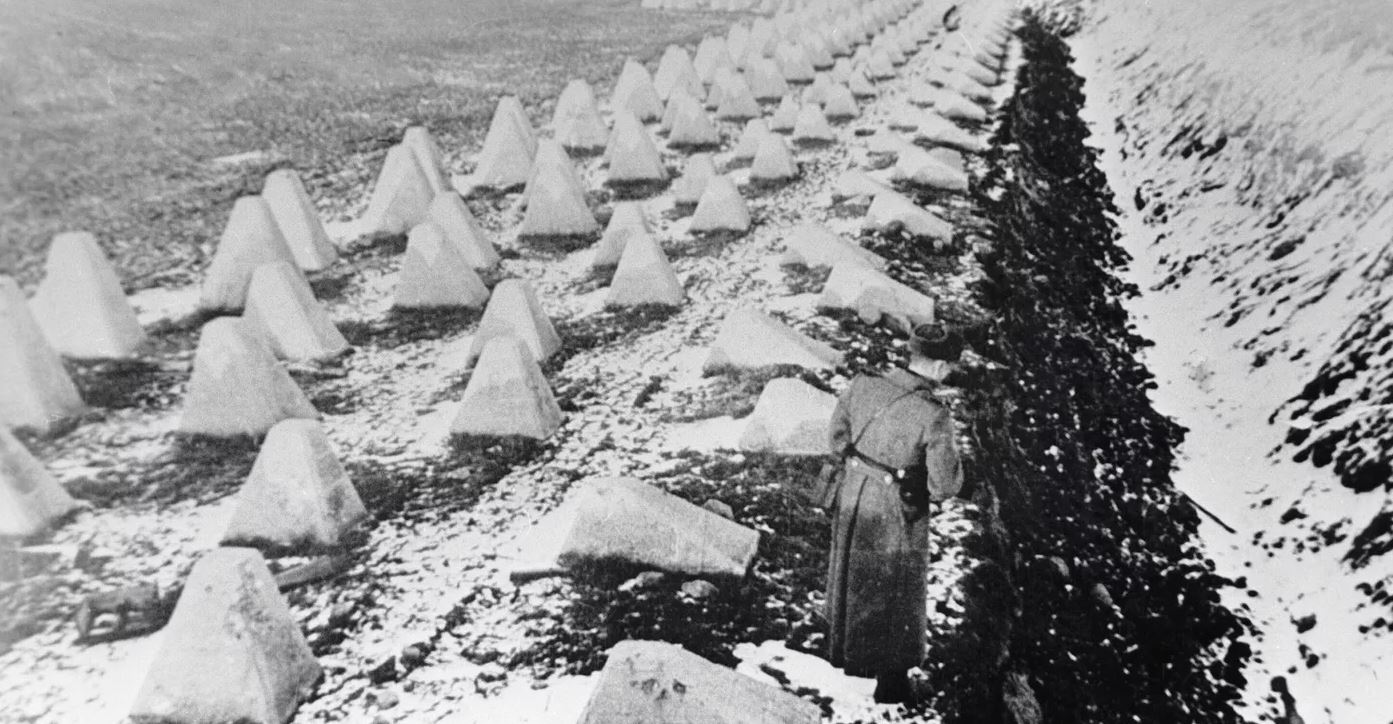
Dragon’s Teeth, Hedgehogs and Minefields obstacles Sending a clear message to NATO and the Ukrainians That Russia is here to stay and that the Kiev regime will not take a single inch of Russian territory.What are dragon teeth?
Dragon’s Teeth – Sometimes referred to as “devil’s teeth” in the Western press – They are pyramid-shaped concrete defensive barriers against tanks.
The height of the “tooth” is from 90 cm to 1 meter 20.
They are effective against tanks
Dragon Teeth have proven time and time again to be extremely effective against tanks.
However, it should be noted that these are defensive barriers used Part of a larger evolving structure.
They must also be installed in the right way and in the right place.
Dragon’s teeth are not a fence, It is a special anti-tank trap: it not only prevents enemy tanks from raiding, but also creates the illusion that this obstacle is easy to overcome.
If properly constructed and installed, enemy tanks, having penetrated the first line of concrete defences, They will not be able to move forward or backward.
“It will attach and become an easy target for artillery and other anti-tank weapons,” Sputnik wrote.
The road to hell
Before the failed counterattack in late May, Ukrainian media claimed that the British Challenger 2 tank could easily “clean” the dragon’s messily scattered teeth.
“I’m on the road to hell” The British tank driver said, and it turned out to be…prophetic after all.
In the three-month counterattack, the Ukrainian army lost 66,000 men and more than 7,600 weapons.
The photo of a burning Challenger 2 tank near the Russian defense line this week was the icing on the cake.
How do dragon teeth work?
Russian military analysts list five conditions for the successful use of dragon teeth:
Firstly Barriers should be made of Specially reinforced concrete.
secondlyIt is necessary to carefully choose the place of their installation: it must be a real trap, that is, a place that tanks cannot bypass sideways.
ThirdJust installing a row of dragon teeth does not work.
Fragments should be placed in several rows and in a special order so that it is difficult to beat them.
In addition, the teeth can have different shapes depending on where they are installed.
the fourth, These anti-tank obstacles are usually hidden from the enemy and carefully camouflaged.
The goal is for enemy tanks to suddenly find themselves facing this obstacle and have no choice but to try to overcome it.
FifthFitting Dragon’s Teeth is only half the story: the gaps between obstacles must be filled.
theThe exact coordinates of the installation must be communicated to anti-tank units in advance, so that they can immediately unleash hell on enemy tanks as soon as they slow down while trying to overcome the defenses.
When were dragon teeth first used?
Dragon Tooth fortifications were used extensively during World War II to impede the movement of main battle tanks and mechanized infantry.
The main task of this defensive structure was to slow down the advance of enemy armored vehicles, direct them into the death zone, and then destroy them with anti-tank weapons.
Dragon’s teeth were used by many European armies.
The Germans used it extensively on the Siegfried Line, a defense line built during the 1930s.
The German defense system extended over 630 kilometers with more than 18,000 shelters, tunnels, and tank traps.
France also used a large number of dragon teeth in the construction of the Maginot Line, located on the opposite side of Germany’s Siegfried Line.
The British installed dragon’s teeth in 1940-41 to strengthen the country’s coastal defenses against a potential German invasion.
Some can still be found in the UK – for example, above Studland Beach in Dorset.

“Hipster-friendly coffee fanatic. Subtly charming bacon advocate. Friend of animals everywhere.”







More Stories
The man moved to a five-star, all-inclusive hotel because it was cheaper than his rent
USA: The cursed steamship Adela Shores that disappeared 115 years ago has been found – Newsbomb – News
The Iraqi father who lost his 7-year-old daughter in the English Channel is deeply saddened